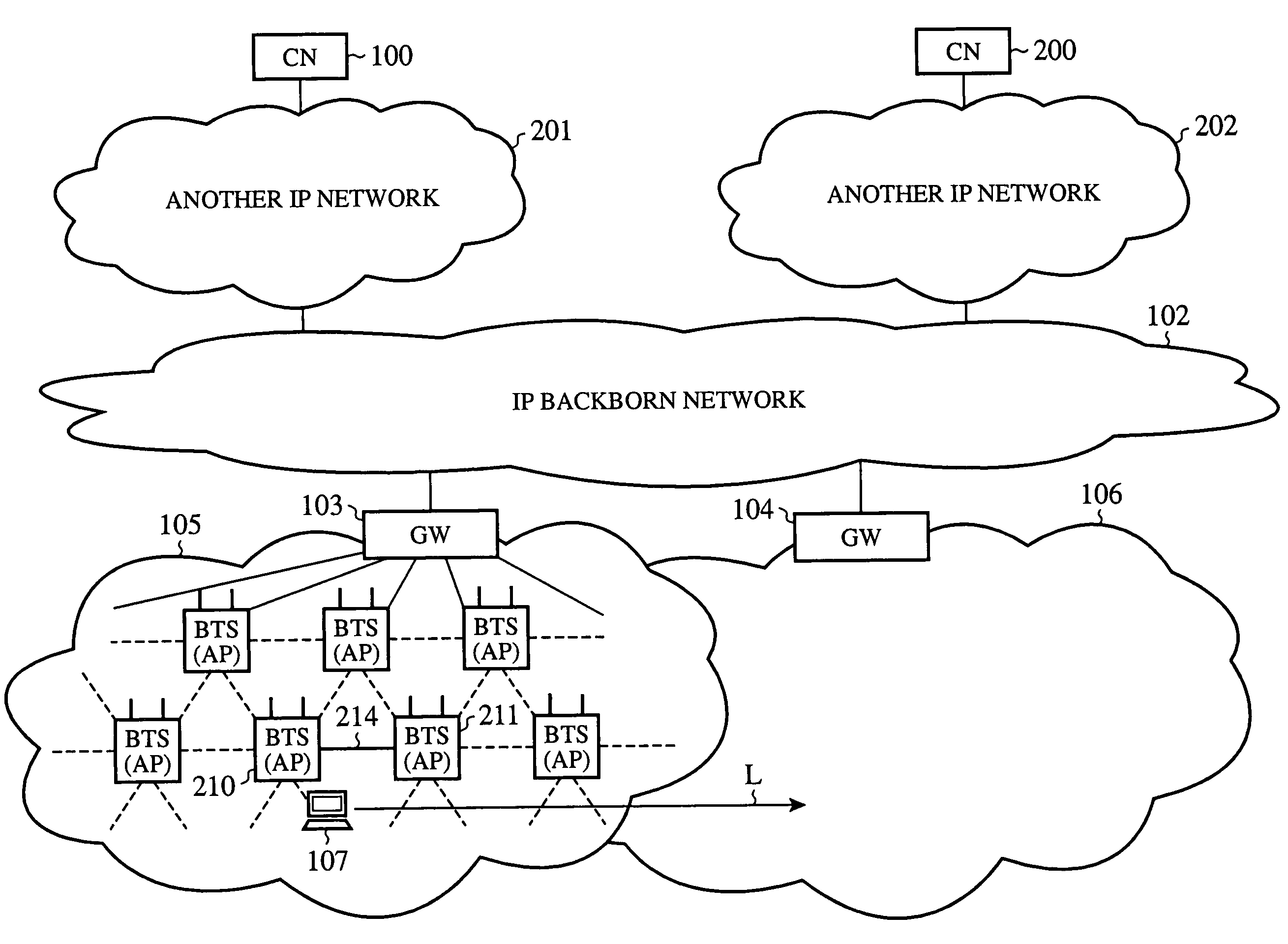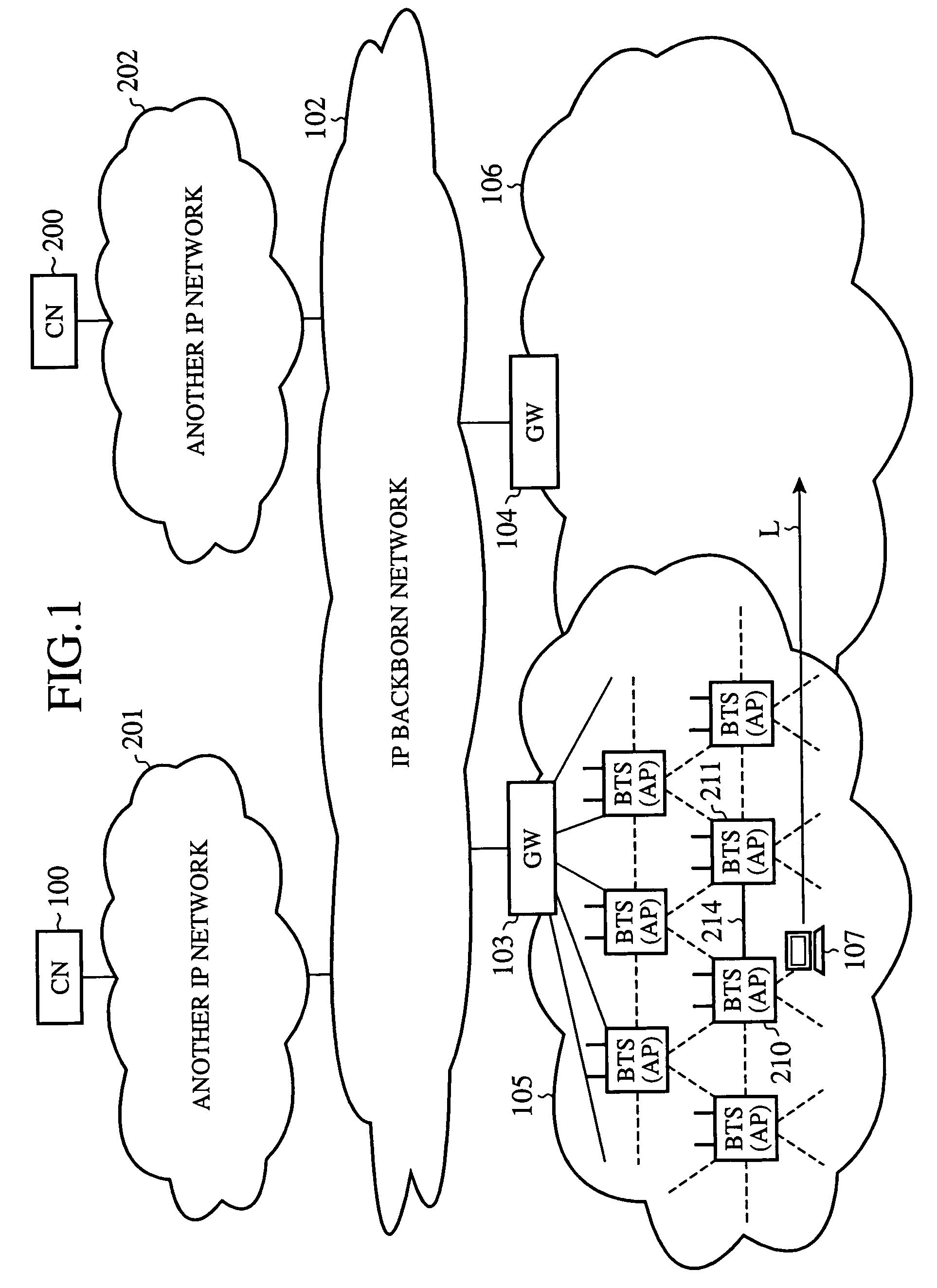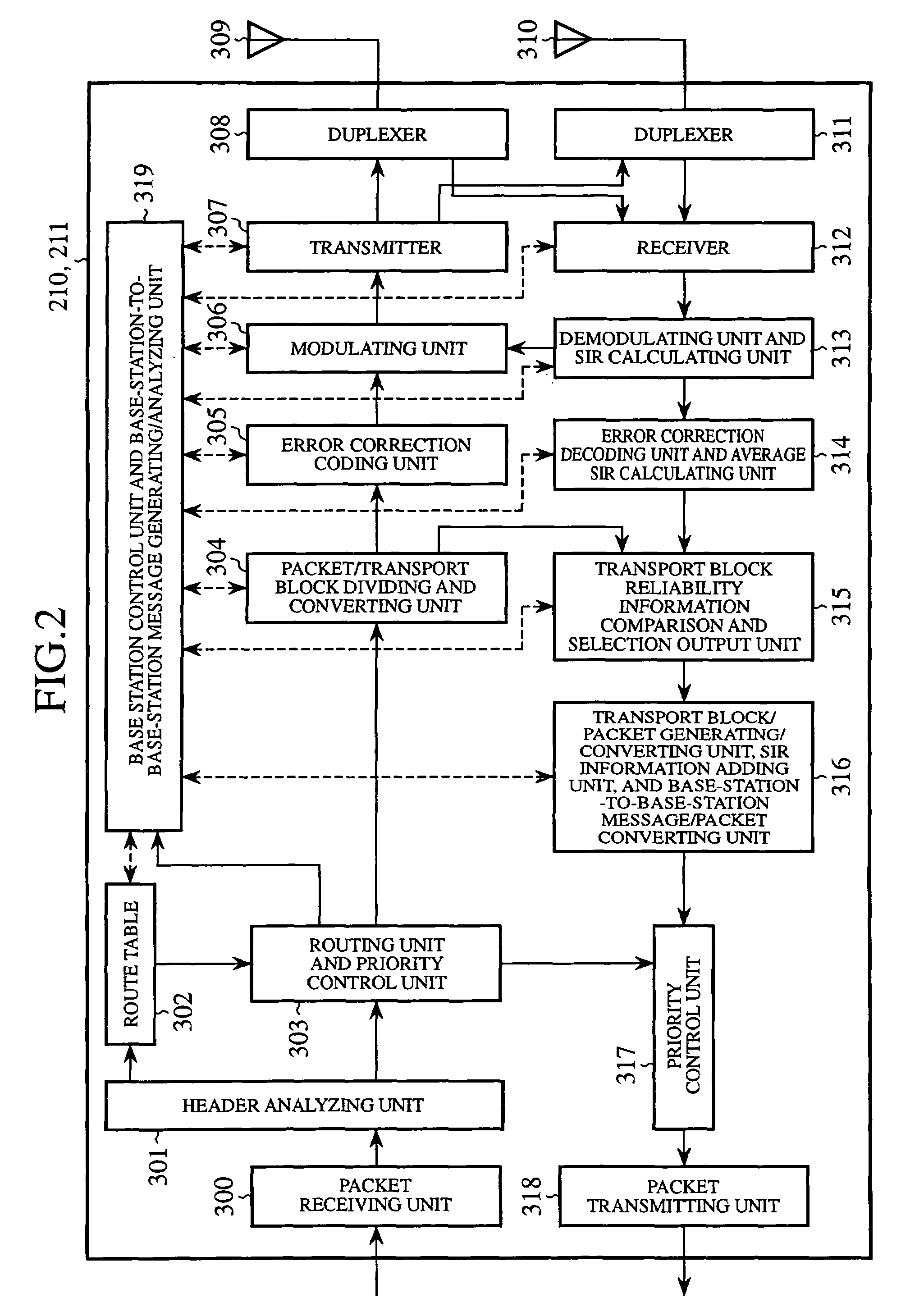Radio base station device and mobile communication system
a radio base station and mobile communication technology, applied in the field of radio base station devices and mobile communication systems, can solve the problems of single point of failure, difficult to thoroughly eliminate, network congestion, etc., and achieve the effect of preventing network congestion and preventing packet loss
- Summary
- Abstract
- Description
- Claims
- Application Information
AI Technical Summary
Benefits of technology
Problems solved by technology
Method used
Image
Examples
embodiment 1
[0052]Embodiment 1 of the present invention will be now described hereafter with reference to FIGS. 1 to 5. FIG. 1 is a diagram showing the structure of a mobile communications system in accordance with embodiment 1 of the present invention, and FIG. 2 is a diagram showing the structure of a base transceiver station which constitutes the mobile communications system in accordance with this embodiment 1. FIGS. 3 to 5 are diagrams showing the operation of the mobile communications system in accordance with this embodiment 1.
[0053]As shown in FIG. 1, the mobile communications system in accordance with this embodiment 1 is provided with a global internet (i.e., an IP backbone network) 102 which is also connected to another IP network 201 (or 202) to which a communications-partner node 100 (or 200) with which a mobile node (Mobile Node) 107 is communicating belongs, a first boundary router (Gateway) 103 and a second boundary router (Gateway) 104 which form a boundary between the IP backb...
embodiment 2
[0109]Embodiment 2 of the present invention will be now described hereafter with reference to FIGS. 1, and 6 to 8. FIG. 1 is a diagram showing the structure of a mobile communications system in accordance with embodiment 2 of the present invention, and FIG. 6 is a diagram showing the structure of a base transceiver station which constitutes the mobile communications system in accordance with this embodiment 2. FIGS. 7 and 8 are diagrams showing the operation of the mobile communications system in accordance with this embodiment 2.
[0110]In above-mentioned embodiment 1, a mobile communications system which handles IP packets and supports a soft handover and a base transceiver station which constitutes the mobile communications system are explained. In accordance with this embodiment 2, a mobile communications system as shown in FIG. 1 uses a base transceiver station as shown in FIG. 3 instead of the base transceiver station of embodiment 1, so that the mobile communications system can...
embodiment 3
[0176]Embodiment 3 of the present invention will be now described hereafter with reference to FIGS. 1, and 9 to 11. FIG. 1 is a diagram showing the structure of a mobile communications system in accordance with embodiment 3 of the present invention, and FIG. 9 is a diagram showing the structure of a base transceiver station which constitutes the mobile communications system in accordance with this embodiment 3. FIGS. 10 and 11 are diagrams showing the operation of the mobile communications system in accordance with this embodiment 3.
[0177]In above-mentioned embodiment 1, a mobile communications system which handles IP packets and supports a soft handover and a base transceiver station which constitutes the mobile communications system are explained. In accordance with this embodiment 3, by simultaneously transmitting plural different transmission symbols from a plurality of transmission antennas using a base transceiver station as shown in FIG. 9, instead of the base transceiver sta...
PUM
 Login to View More
Login to View More Abstract
Description
Claims
Application Information
 Login to View More
Login to View More - R&D
- Intellectual Property
- Life Sciences
- Materials
- Tech Scout
- Unparalleled Data Quality
- Higher Quality Content
- 60% Fewer Hallucinations
Browse by: Latest US Patents, China's latest patents, Technical Efficacy Thesaurus, Application Domain, Technology Topic, Popular Technical Reports.
© 2025 PatSnap. All rights reserved.Legal|Privacy policy|Modern Slavery Act Transparency Statement|Sitemap|About US| Contact US: help@patsnap.com



